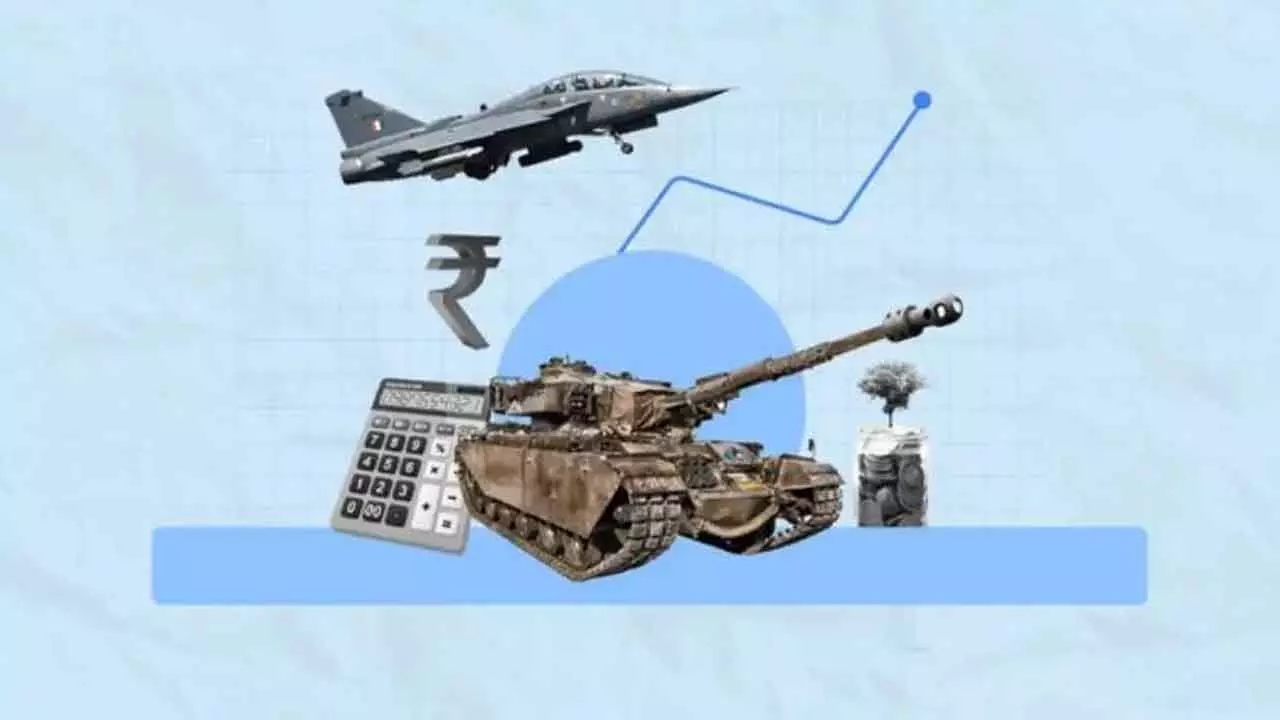India's Defence Budget Set To Soar 5x By 2047, Eyes Global Export Leadership
India is reshaping its defence landscape with a bold Vision 2047 plan, aiming to become a top global exporter while massively expanding its military budget and indigenous capabilities
India's Defence Budget Set To Soar 5x By 2047, Eyes Global Export Leadership

India is set to increase its defence budget nearly fivefold by 2047, transforming from a major arms importer into a global export leader. With exports already reaching over Rs 23,000 crore and ambitions to hit Rs50,000 crore by 2029, India is leveraging indigenous innovation, strategic partnerships, and the Atmanirbhar Bharat initiative. Backed by a surge in capital and R&D spending, and exports spanning 80 countries, the country is positioning itself among the top five global defence exporters. However, the journey faces hurdles—from technological dependencies to talent gaps and geopolitical challenges—underscoring the need for robust policy, investment, and public-private synergy
A significant aspect of Vision 2047 is turning India into a global defence export leader by 2038. By aiming to position India among the top five global exporters of high-quality defence equipment and technology, the country seeks to enhance its strategic influence and economic prosperity.
India's defence sector is undergoing a strategic transformation, fuelled by policy reforms, technological ambition, and the Atmanirbhar Bharat push. With rising private sector participation, growing exports, and a focus on advanced technologies, the industry is fast becoming a key driver of national security, innovation, and global competitiveness.
The strategic vectors are outlined to enhance self-reliance, achieve global leadership in technology, and become a major exporter which will require phased implementation of strategic recommendations over three distinct periods of short term (2025-2032), Medium term (2032-2038) and long term (2038-2045).
India's defence exports are on a significant upward trajectory, with a target of reaching Rs 50,000 crore by 2029. The Stockholm International Peace Research Institute (SIPRI) reports that India's defence exports have increased substantially, with a 34-fold growth from Rs 686 crore in 2013-14 to Rs 23,622 crore in FY25. SIPRI's reports also highlight India as a growing arms exporter and a major arms importer, showcasing both its rising defence manufacturing and increasing demand for imported defence
India is now exporting to around 80 countries, demonstrating its increasing global presence in the defence manufacturing sector. In FY25, defence exports reached a record high of Rs 23,622 crore, representing a 12.04% increase over the previous year.
India delivered the first batch of BrahMos supersonic cruise missiles to the Philippines, following a USD 375-million deal for three shore-based, anti-ship missile batteries. ASEAN countries and some Gulf nations are showing increasing interest in acquiring BrahMos missiles.
Dornier-228 Aircraft: India exports the Dornier-228 aircraft, a versatile and reliable aircraft for defense and civilian applications to various countries.
India exports subsidiary aircraft parts like fuselage and wings to defense giants such as Boeing and Lockheed Martin as part of the global supply chain and offset commitments.
India exports software and electronic equipment for defense applications to France.
India has been exporting 155mm artillery guns to countries like Armenia, highlighting its capabilities in producing advanced artillery systems. The Akash air defence missile system, including its variant Akash-1S, has been a major export, with Armenia being the first international customer.
Pinaka multi-launch rocket systems have been exported, with Armenia being a significant buyer.
India is on track to dramatically increase its defence spending nearly fivefold by 2047, potentially becoming the world's third-largest military spender after the United States and China, according to a comprehensive report released by the Confederation of Indian Industry (CII) and global consultancy KPMG. The study outlines how, when, and why India's defence budget could grow from Rs 6.8 lakh crore in FY 2024–25 to Rs 31.7 lakh crore by 2047.
Capital expenditure—used for procurement of modern equipment and infrastructure—is forecast to rise significantly, from the current 27 per cent of the defence budget to 40 per cent. Research and development (R&D) spending is also likely to double from 4 per cent to between 8 and 10 per cent. "The share of GDP allocated to defence may increase from 2 per cent to as high as 5 per cent, indicating a strong policy shift," the report noted, as quoted by TOI.
Despite the ambitious roadmap, the report warns of several structural and strategic challenges. Key among them is India's continued dependence on imports for critical defence technologies, a factor that limits self-reliance in high-end military hardware. The defence sector also faces a shortage of skilled professionals needed to manage next-generation platforms and complex systems.
Geopolitical instability, particularly along India's northern and western borders, as well as broader regional rivalries, could further complicate planning and shift government focus towards urgent procurement needs instead of long-term investment goals.
The report calls for robust partnerships between the public and private sectors to drive India's defence transformation. However, it also stresses the need for well-calibrated incentives and policy support to attract private capital into defence manufacturing. Issues surrounding intellectual property rights and technology transfers in foreign collaborations remain sticking points, potentially hindering the pace of domestic capability-building.
India's evolving strategic role in South Asia and across the Global South has made long-term defence planning integral to the country's economic and diplomatic aspirations. As military spending climbs, the country is not only looking to protect its borders but also to reshape its standing in global defence diplomacy.

